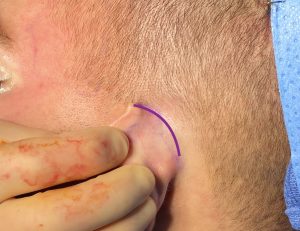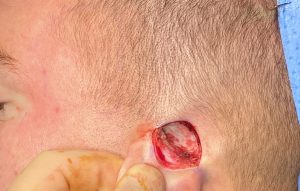Background: Implants offer one effective method for treating temporal hollowing which is defined as an excessive concavity . There are two basic styles of temporal implants, standard and extended, whose shapes are based on the extent of the temporal hollowing that is being treated. Regardless of the implant style used the traditional placement is through a small incision placed somewhere back in the hair-bearing temporal region.
But in the patient with a short hair style on the side of their head the traditional incisional approach may not be aesthetically acceptable. In such cases, which are more often men than women, the alternative technique is a postauricular incision placed in the crease behind the ear. This provides good access to the deep temporal fascia where the implant can be placed beneath it. While the angulation of implant insertion is different, the distance between the incision and the subfascial implant pocket is not much greater than the traditional incision location.
Case Study: This male patient desired to have his temporal hollowing corrected by an implant. On careful examination his temporal concavity extended behind his temporal hairline back to his ear. It was decided to use an extended temporal implant style that rather than being vertical would be placed horizontal in orientation to treat the extent of the hollowing. (deeper by the side of the eye than back towards the ear)
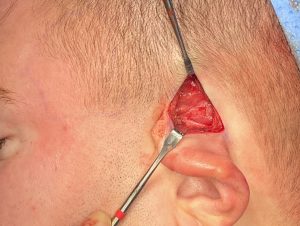
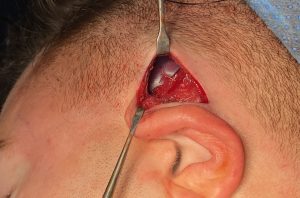
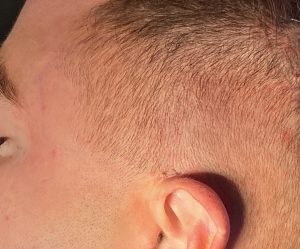
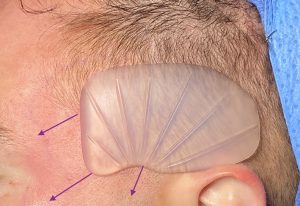
Case Highlights:
1) In the short-hair temporal implant patient a lateral postauricular incisional approach offers an invisible scar.
2) Subfascial temporal implant positioning can be done from the postauricular incision just as well as from other incisional accesses.
3) The orientation of standard temporal implants should be adjusted based on the patient’s aesthetic needs….not just how they were designed to be used for standard aesthetic needs.
Dr. Barry Eppley
World Renowned Plastic Surgeon




